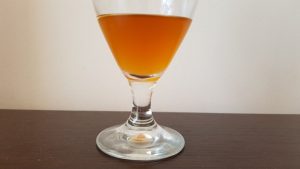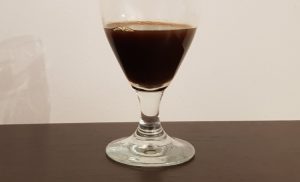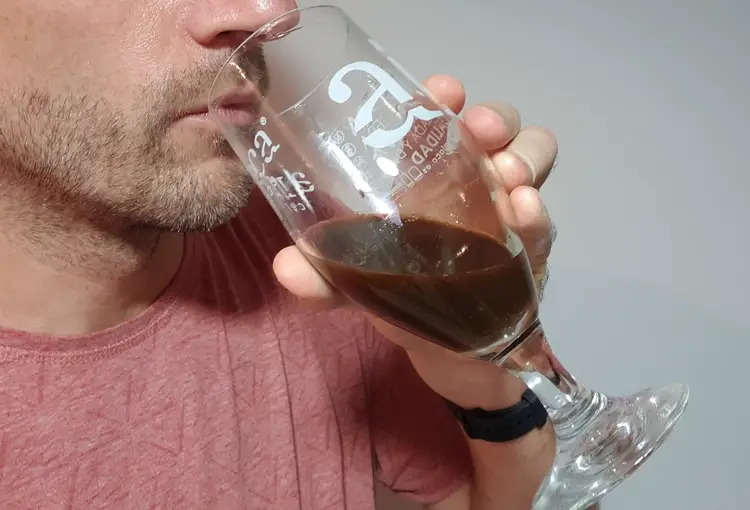Raw wort can tell you a lot or a little about your beer. This partly depends on how developed your palate is at that moment. It will hint at what sort of beer it will be, subtle characteristics to reveal how quenching or delicious its potential.
Raw wort hints at the characteristics of a beer. The maltose makes it sweet. The hops will declare their flavor as well. Specialty malts will announce their unique presence. Each distinct flavor can be pinpointed which reveals the underlying character of the beer.
Wort Taste in Lighter Beers
I would consider these any color from gold to amber.
Stylistically they will include golden ales (a general term), wheat beers, Pales, ambers, Belgians and various lagers.
The tables to follow are a tool and a guide to show you what to taste for in your wort.
They are guidelines and not meant to be hard fast rules.
As stated before, it will take time for your palate to develop.
| Style | Malt | Original Gravity | Hops Bittering | Flavor | Aroma | Sweetness (1-10) |
| Golden | toasty, bready | 1.040 – 1.050 | Modest | Mild to strong | Mild to Moderate | 5 |
| Pale Ale | Carmel, hint of roast or chocolate | 1.040 – 1.060 | Moderate to strong | Moderate to strong | moderate | 4-8 |
| Belgian | Overt sweetness, robust, rarely dark malted | 1.050- 1.090 | Mild to barely perceptible | Barely perceptible | Barely Perceptible | 6-10 |
| Lager | Malt dominant, some toastiness | 1.040 – 1.060 | Moderate to high | Mild to moderate | Mild to moderate | 5-8 |
Wort Taste in Golden Ales and the “Lighter Styles”
Golds take many forms, characterized by their light color and varied malt palate.
You may still get some bready, toasted flavors from them using Light Munich or Biscuit malt.
Hops can vary but often lie somewhere in the middle.
In many cases, Golden ales are brewed for beginning craft beer drinkers.
The word light however can be misleading.
Some of the world’s strongest, sweetest beers are golden colored!
Pale Ales

Pales are a complexly broad category ranging from lighter alcohol bitters to strong citrusy India Pale Ales.
Their hue lands somewhere between orange to red.
English Bitters can be lighter or darker in color, distinguished by their lower alcohol and use of specialty malts, so may be a little more caramelly, even subtly roastier, than Pales.
Pales are bitter, the Americans more so than the English. The Americans pride themselves on having aggressive, knock-you-in-the-face beers, and Pales can do that.
Lagers are sweeter beers with moderate hop character, with the exception of Pilsner beers, which can be very bitter but balanced with the malt.
Belgian Ales are traditionally dominated by the malt character. Hops are used merely as a flourish, sparingly used just enough to keep the beer in balance.
Again, this is all about wort, and what you may expect.
First impressions tell you a lot about what will play out in fermentation.
Lager beer will hide nothing
Some brief notes on lager brewing, especially the lighter styles. Pils, Helles, Kӧlsch (an ale) are all German styles, exceptionally light in color with a pure malt profile; that is brewed with few mash additions other than some form of Pale malt, and perhaps a little wheat.
You cannot hide mistakes in Lager beer.
The yeast will have a decidedly neutral character.
Kӧlsch yeast holds a subtle fruitiness.
A Pils may be bitter but the malt flavor must be crisp, sweet, and exceedingly pure.
We cannot perceive infection in raw wort as it is so fresh.
There could be off flavors however- leached tannins from the over-sparged mash, too much adjunct malt in the mash or included in the lager kit.
If using extract to brew lagers, there is a risk of high melanoidin content, sweet proteins formed during extensive kettle contact.
The sweetness, inspiring in raw wort, may linger in high final gravity finishes and throw the beer out of balance.
I’ve met a fair number of drinkers and homebrewers that snub lager beers as not flavorful enough or not challenging to produce. In fact, by some measures lagers are the most complex, in their simplicity.
You cannot hide ANY problems in lager beer, and each distinct characteristic is on full display.
Raw wort lager will reveal these things.
Wort Taste in Dark and Strong Beers

This broad category spans the world as well, North America and Europe favoring them the most.
What makes dark beer is specialty malt, usually but not always.
| Style | Malt | Original Gravity | Hops Bittering | Flavor | Aroma | Sweetness (1-10) |
| Porter, Brown | Chocolatey, burnt, caramel | 1.045 – 1.055 | Moderate to strong | Mild to strong | Mild to Moderate | 5-7 |
| Stout
(Irish, Milk, Imperial) |
Roasted, chewy, milky | 1.040 – 1.080 | Mild to moderate | Mild to moderate | Barely Perceptible | 4-10 |
| Abbey Ales
Wee Heavy |
Sweet, robust, subtle blackness | 1.060- 1.080 | Barely perceptible to Moderate | Barely perceptible to mild | Barely Perceptible | 6-10 |
| Dunkel/ Bock
Lager |
Malt dominant, dark munich toastiness | 1.042 – 1.060 | Mild to Moderate | Mild to moderate | Mild to moderate | 5-8 |
Dark, Brown and Black Beers
Many enjoy a darker more robust beer.
When I began drinking craft beer, I would only drink darker beers.
They vary in gravity from about 1.042 – 1.080 or better.
The sweetness of the wort as with gold beers will vary.
The biggest difference is the profile and subtlety, or dominance of the malt.
A bock may be brewed with 80% Munich malt only, modest amounts of Chocolate to give it a sharp finish.
Stouts are distinguished by roasted unmalted barley and can have the most baked-in flavor, reminding us of black breads, or charred meat even.
Porters have the distinction -not sole- of often containing all three dark malts; Chocolate, Roasted barley and Black Patent and a healthy amount of Carmel/ Crystal.
They will contain layers of toasty, dessert-like, crusty, toastiness that few beers, dark or otherwise contain.
I let the chocolate malt dominate my Porter balanced with a strong Caramel addition.
OG was usually about 1.050 – 1.054, so it was a hearty beer on a winter eve or after a hard day’s night.
Scots beers and Belgian have light hops character and focus on malt and yeast for profile.
Again, usually defined by alcohol strength, the wort sweetness is dominant.
Belgian’s chiefly use dark malts for coloring and mash them in small amounts.
They will steep in the kettle as homebrewers do to get the desired color, but not the overwhelming burnt characteristics.
Wee Heavy’s will have Roast and Caramel tones, with minimal hop character.
The yeast is far more neutral than Belgians in the finished product.
Historical Commercial Use of Raw Worts – The Dark Age of American Brewing
The United States is the largest single beer market, and has a long history of brewing, and its infamous interruption.
On January 16, 1919 the 18th Amendment to the US Constitution made manufacture, sale, and distribution of alcohol illegal.
This period is known as Prohibition. Homebrewers were included, forbidden to produce alcohol for any reason.
During the Great Depression, in 1933, the 21st amendment undid this travesty of a law.
The few dozen breweries that survived this Dark Age of American brewing stayed afloat by making malt extract soda-pop.
They also made ice cream and bulk malt extract for bakers to be used as sweeteners.
Certainly, none had the audacity to make beer at this time, a fermenter stuck back in storage and covered with canvas tarps, nudge nudge, wink wink.
Final Flavor Considerations
Your pre-pitch wort may tell you a lot.
It’s an exciting moment to take a gravity reading just before pitching the yeast.
Your hydrometer vial reflects ambition, promises and a vision of what you aspire to create.
Moreover, within the tapestry that is raw barley, allow your tongue to perceive the hints and traces and traces of flavor, even so slightly perceptible.
Roasted malt holds a baked toastiness.
Tettnanger hops can remind you of cardamom or curried spice.
The bitterness of Tomahawk hops at 17%+ alpha will hit you over the head like a real stone hammer.
In the end, if the wort tastes good, you have successfully executed step one.
Ferment and package well.
Victory is just around the corner.

